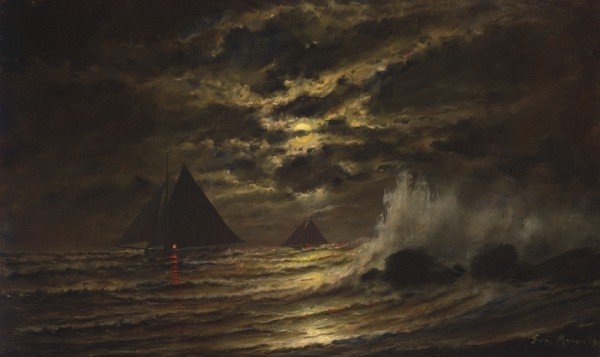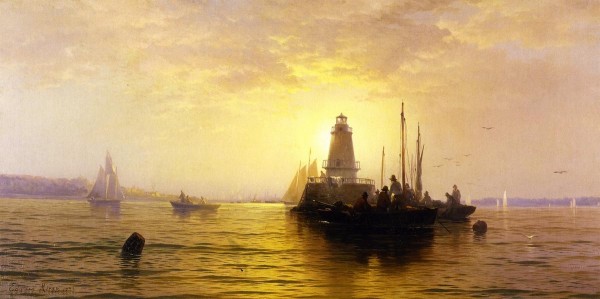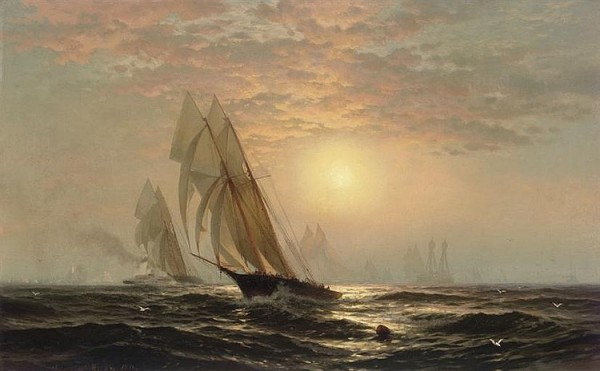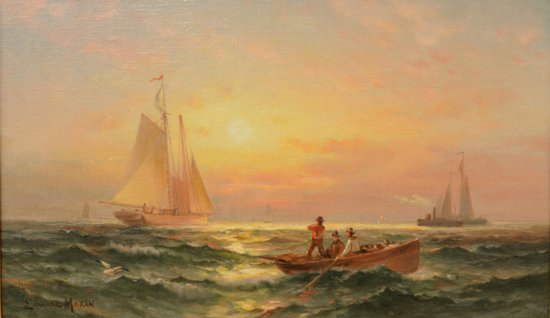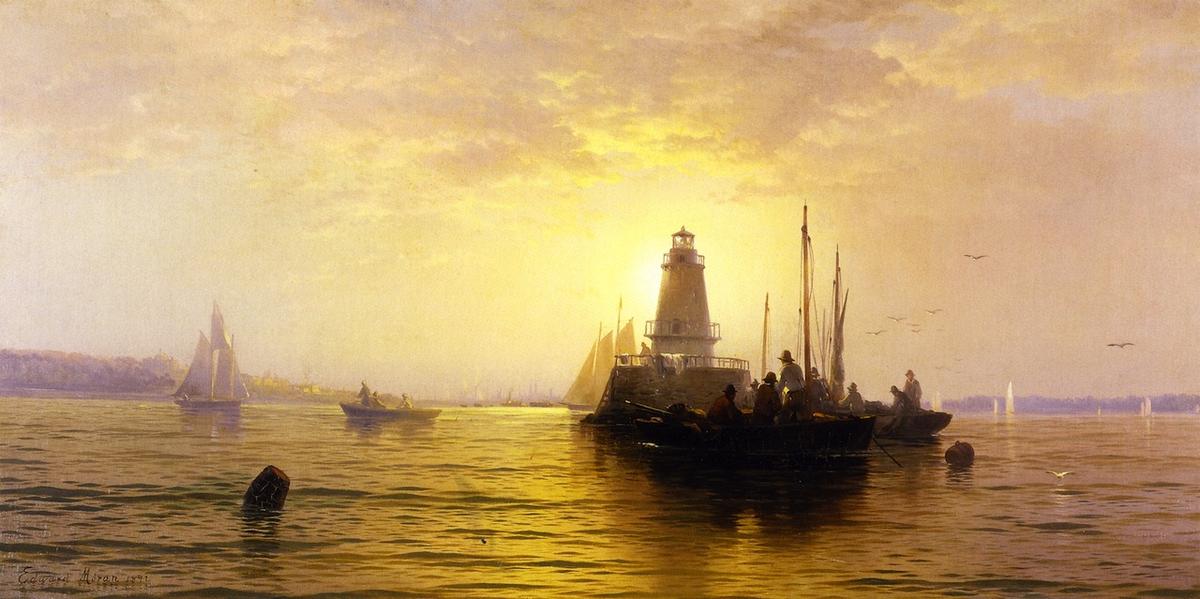(1829 – 1901) Born in Bolton, Lancashire, England, the son of Thomas Moran and Mary Higson, home handloom weavers. In 1845 Thomas Moran, Sr., moved the family to Kensington, Pennsylvania, near Philadelphia. After briefly trying other occupations, including carpentry and house painting, Edward Moran returned to the textile industry, not as a weaver but tending a power loom. After he had worked at the factory for seven years, Moran’s supervisor (who, according to family legend, found Moran drawing instead of tending the loom) arranged an introduction to the prominent marine painter James Hamilton.
Apprenticeship was the standard career path for an aspiring artist. Hamilton, probably in need of an assistant for a major commission, took Moran on, and the two worked together for the next two years. When Hamilton left for London in 1854, Moran gravitated to the circle of the German-born landscape painter G. D. Paul Weber, who, though only six years older than Moran, was already an established artist.
Moran, who had been exhibiting with the Pennsylvania Academy since 1854, fell into violent disagreement with its board of directors in 1868 when he felt his works were given an unfavorable position in the annual exhibition. He expressed his anger by cutting one of his paintings from its frame and covering others with an opaque (but removable) wash. John Sartain, acting on behalf of the board, censured Moran until he formally apologized for his behavior. Drawing widespread press coverage, the incident increased attendance at the academy, leading the directors of the academy to propose extending the exhibition. Moran, however, withdrew his paintings on the appointed closing day and displayed them at a commercial gallery, which earned him even more publicity. Going further, he refused to apologize and resigned from the academy.
After settling in New York in 1872, Moran was elected an associate of the National Academy of Design.
In the presence of works by Martin Johnson Heade, John Frederick Kensett, and Sanford Robinson Gifford at the National Academy of Design, Moran began to experiment with luminism. The use of filtered light, hazy brushwork, and the portrayal of mood over subject became a characteristic trait of Moran’s throughout the 1870s.
The 1880s saw Moran hailed as the leading American marine painter and praised in the Art Journal (Sept. 1880) for his “simple and easy naturalism.” Discussing his technique in a series of articles for Art Amateur, Moran discussed not only the technical details of marine painting but also his working habits and the opinion that marine painting is a “particular branch of landscape painting” subject to all the same difficulties.
In the 1890s Moran turned to historical marine scenes, a genre he had not generally worked in before. Thirteen canvases were completed between 1891 and 1898 depicting the maritime history of America. The series, which includes Landing of Leif Eriksson in the New World in 1001, Return of the Conquerors, and Burning of the Frigate Philadelphia, is now in the collection of the U.S. Naval Academy Museum in Annapolis.
At the time of his death in New York City, Moran was eulogized as “having no superior in America” as a painter of the sea. Moran’s achievement was soon neglected, however, and his fame eclipsed by that of his brother Thomas.
